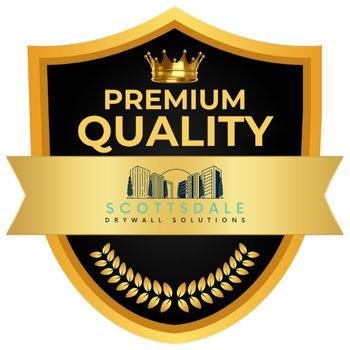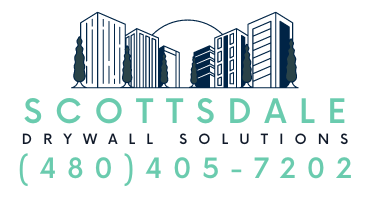Litchfield Park Drywall Repair Services
Cost-Effective Drywall Repair Contractors in Litchfield Park, Arizona

Maintaining your drywall is essential for preserving your home's appearance and structural integrity in Litchfield Park's unique Arizona climate. Located 19 miles west of Phoenix in Maricopa County, this community of 6,847 residents faces specific challenges from the Sonoran Desert's hot desert climate (Köppen BWh). From water damage and mold issues to unsightly cracks and nail pops, local experts from Scottsdale Drywall Solutions offer comprehensive solutions to address these common drywall problems.
Professional drywall services in Litchfield Park include water damage restoration, mold remediation, patch repairs, crack fixing, popcorn ceiling updates, tape and seam repairs, nail pop corrections, plus full installation and finishing work. When you notice any drywall issues, prompt attention from qualified contractors helps prevent further damage and maintains your home's value.
The dry Arizona air and seasonal temperature changes can worsen existing drywall problems, making professional repairs particularly important in Litchfield Park homes. With record high temperatures reaching 125°F and summer daily maximums averaging 106.5°F, the extreme heat cycles can cause significant expansion and contraction in building materials. Local contractors use premium materials and proven techniques to ensure lasting results that match your existing wall textures and finishes perfectly.

Scottsdale Drywall Solutions (CP)

Comprehensive Drywall Repair Services in Litchfield Park, AZ
Professional drywall repair services in Litchfield Park address all types of damage through specialized techniques and equipment. Given the area's minimal annual precipitation of just 8.18 inches, most water damage in Litchfield Park homes results from plumbing leaks, HVAC issues, or rare but intense monsoon storms that occur primarily in July and August. Local contractors provide expert solutions for water-damaged walls, mold growth, unsightly holes, and structural imperfections.
Water Damage Restoration
Water damage requires immediate attention to prevent structural deterioration and mold growth. Your drywall may show signs like bubbling paint, discoloration, or softening of the material.
Professional contractors use moisture meters to assess the full extent of water damage beyond visible areas. This helps determine whether sections need replacement or can be salvaged.
The restoration process includes removing wet materials, drying the affected area with industrial dehumidifiers, and installing new drywall when necessary. In Litchfield Park's low-humidity environment (average relative humidity around 20-30%), proper moisture control is critical to prevent overcorrection that can lead to cracking and shrinkage. Proper ventilation systems prevent future moisture issues.
Mold Remediation for Drywall
Mold remediation starts with a thorough inspection to identify affected areas and the source of moisture. Specialized testing can detect hidden mold growth within wall cavities.
Certified technicians wear protective equipment and isolate the work area to prevent spore spread. They remove contaminated drywall sections and treat surrounding areas with EPA-approved antimicrobial solutions.
Key Steps in Mold Remediation:
- Containment setup
- Removal of affected materials
- HEPA filtration
- Surface treatment
- New drywall installation
While mold issues are less common in Litchfield Park due to the arid climate, they can occur in areas with poor ventilation, particularly in homes built during the community's rapid expansion phases following Goodyear's 1964 development plans.
Patching Holes and Cracks
Small holes from picture hangers need simple patching compounds, while larger damages require backing support and professional finishing. Your contractor will match existing textures seamlessly.
Professional repair includes:
- Cleaning and preparing damaged areas
- Installing support materials
- Applying joint compound in layers
- Sanding smooth
- Texture matching
- Paint blending
Many Litchfield Park homes feature architectural styles from different development eras, including properties from the original 1920s Litchfield Ranch period and later Goodyear development phases, requiring specialized knowledge of various construction methods and materials used throughout the decades.
Nail Pops and Surface Imperfections
Nail pops appear as small bumps where fasteners push through the surface. These common issues are particularly prevalent in Litchfield Park due to the extreme temperature fluctuations, with winter lows averaging 42.9°F in January and summer highs reaching 106.5°F in July - a difference of over 60 degrees that causes significant expansion and contraction in building materials.
Professional repair involves:
- Removing loose material
- Resecuring drywall to studs
- Patching and texturing
- Paint touch-up
Temperature-resistant fasteners and proper installation techniques prevent future nail pops. Your contractor will check surrounding areas for similar issues that may need attention.
Specialized Drywall Solutions: Tape, Seams, and Popcorn Ceiling Repair
Professional drywall repair demands precise techniques to create seamless surfaces and restore damaged areas. Expert solutions for tape, seams, and popcorn textures require specialized skills and equipment.
Tape and Seam Repair Techniques
Fixing loose or bubbling tape requires careful removal of the damaged section and application of new fiberglass mesh tape. You'll need joint compound applied in multiple thin layers to ensure proper adhesion.
The repair process starts with cleaning the affected area and removing any loose material. Professional-grade joint compound creates stronger bonds than basic pre-mixed options.
Each layer must be feathered out 6-8 inches beyond the repair area to blend seamlessly with surrounding surfaces. In Litchfield Park's dry climate, contractors must work quickly and use extended-drying compounds to prevent premature curing during the hot summer months when indoor temperatures can remain elevated even with air conditioning. Sanding between coats produces the smoothest finish.
Popcorn Ceiling Repair and Removal
Damaged popcorn texture requires matching the existing pattern precisely. Small repairs involve cleaning the area, applying new texture, and blending edges carefully.
Complete popcorn removal starts with testing for asbestos in homes built before 1980. This is particularly relevant in Litchfield Park, where the original residential development began in the 1920s under Paul W. Litchfield's Southwest Cotton Company, and many historic properties from the mid-20th century expansion may contain asbestos materials. The process involves spraying water to soften the texture, scraping carefully, and smoothing the surface.
After removal, your ceiling will need repairs to any exposed seams or damage. A primer coat prepares the surface for new texture or paint.
Texture Matching and Blending
Matching existing textures demands skill with various application techniques. Common texture styles include:
- Knockdown
- Orange peel
- Skip trowel
- Smooth finish
Test patches in inconspicuous areas ensure proper texture consistency. Professional spray equipment provides even coverage across repairs.
Small texture repairs use hand techniques with specialized tools to match surrounding patterns. Larger areas require professional spray equipment for consistent results.
Expert Drywall Installation and Finishing
Professional drywall installation and finishing requires precision, skill, and attention to detail to create smooth, durable walls that meet both aesthetic and structural requirements. In Litchfield Park, where the community spans 3.3 square miles and borders Avondale, Goodyear, and Glendale, contractors must be familiar with varying building codes and architectural standards across different jurisdictions and development phases. Experienced contractors use high-grade materials and specialized techniques to deliver superior results.
Residential and Commercial Drywall Installation
Your drywall installation project starts with accurate measurements and proper material selection. Professional installers use Type X fire-resistant drywall for garages and moisture-resistant panels for bathrooms and kitchens.
Given Litchfield Park's history as a planned community with the famous Wigwam Resort (opened in 1929) and its mix of residential and hospitality properties, contractors often work on both historic renovations and modern construction projects requiring different approaches and materials.
Experts secure panels with the correct screw patterns to prevent future nail pops and shifting. A proper installation includes:
- Precise cutting around electrical boxes and fixtures
- Secure attachment to wall studs and ceiling joists
- Professional taping of seams and corners
- Careful installation of corner beads for durability
Drywall Finishing and Texture Options
You can choose from multiple texture options to match your existing walls or create a new look:
- Smooth finish for modern spaces
- Orange peel for subtle texture
- Knockdown for traditional appeal
- Skip trowel for Mediterranean style
Professional finishers apply multiple coats of joint compound, sanding between layers to achieve a seamless surface. Each texture requires specific tools and techniques to ensure consistent coverage and pattern matching.
The choice of texture is particularly important in Litchfield Park homes, where the original Southwest/Mediterranean architectural influences from the Goodyear development era often favor textured finishes that complement the desert landscape and regional design aesthetic.
Coordination with Interior Painting Services
Your newly installed drywall requires proper preparation before painting. Professional services include:
- Application of high-quality primer
- Inspection for surface imperfections
- Final sanding and dust removal
- Color matching with existing walls
Paint selection and application techniques vary based on the wall texture and room purpose. In Litchfield Park's intense UV environment, with over 300 sunny days per year and minimal cloud cover, contractors recommend high-quality primers and paints with superior fade resistance to maintain color integrity in sun-exposed rooms. Professionals coordinate drywall finishing and painting schedules to minimize project time and ensure optimal adhesion.
